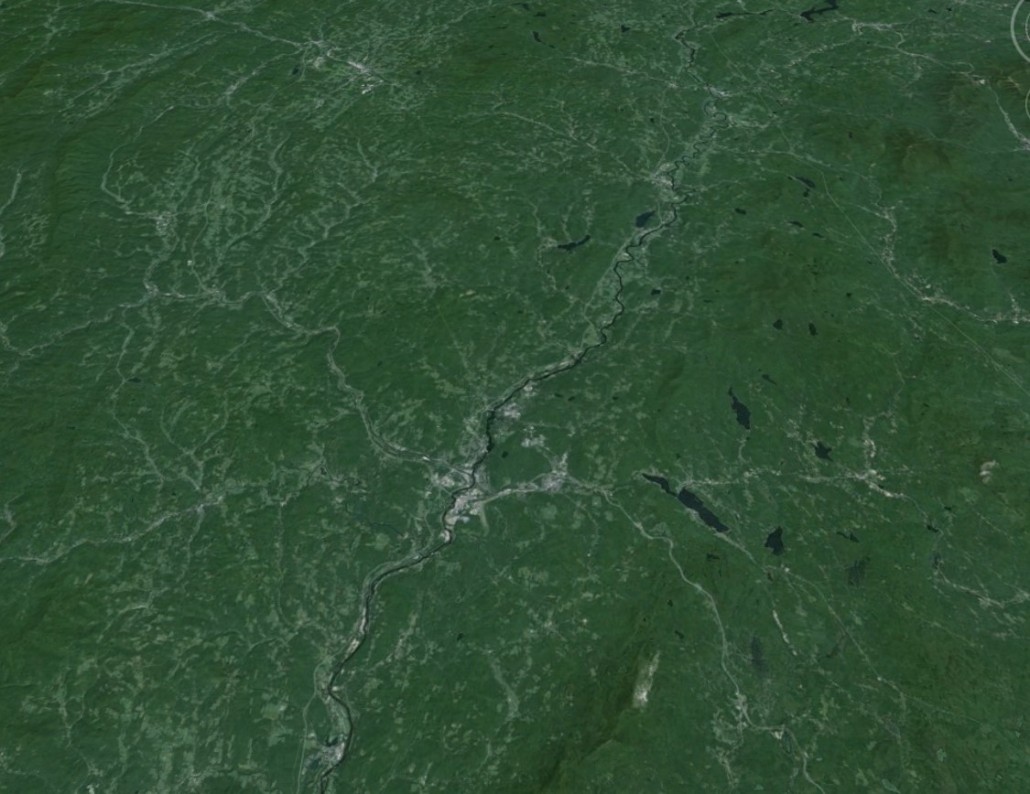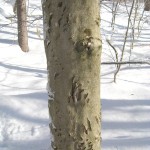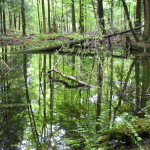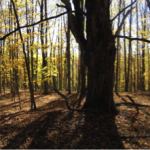Our goal: Supporting the working forest economy and connecting the places plants and animals need to adapt and thrive.
Habitat fragmentation – the breakdown of contiguous stretches of natural areas into smaller and smaller pieces by roads and developments – is one of the biggest ecological challenges of our time. Large blocks of core forest and connected habitat are essential for some species. Migratory and interior forest birds, for example, are less likely to be found in the woods surrounding housing developments, because they prefer interior to edge habitats. Bigger animals, like bear and moose, have large ranges and need corridors of greenspace to move between different habitat patches.
Protecting connected parcels of high value habitat will make our region more resilient in the face of climate change. Our conservation priorities connect lowland to upland and span roadless sections with high ridges, pristine ponds and high quality timber stands. We’ve helped local municipalities acquire and establish Town Forests, where all residents can participate in forest stewardship.
A forest without roads through it doesn’t necessarily preclude human use and enjoyment. Forestry is an important part of our economy. responsible timber harvesting and forest management can have minimal impact, or improve, habitat. Forests are good for people! They provide opportunities for families to collect their own firewood, chop down a Christmas tree, or tap trees to make maple syrup. Large tracts of undeveloped land are places to take your child, grandchild, or friend for a walk in the woods, unplug from the busy routines of daily life, and learn something new. You just might see one of those large mammals using the wildlife corridor we protected.
CURRENT FOREST AND HABITAT CONSERVATION PROJECTS*:
Rix Ledges, Lebanon. One of the highest priorities for the Lebanon Conservation Commission, this 223-acre property includes bear habitat as well as wetland resources. UVLT will acquire the land by gift and will own it for long-term habitat protection. Completed Fiscal Year 2016!
Smith Pond Forest, Enfield. UVLT has contracted to buy a 997-acre property along Smith Pond in Enfield. 41% of this land is NH Wildlife Action Plan ranked habitat, including 198 acres within the highest tier. Once preserved, this property will fill a gap creating a contiguous forest block of over 5,000 acres! The land contains various wetlands and streams and features a scenic waterfall that will continue to be a popular destination for people in the area. The property was once used by the historic Enfield Shaker Community and UVLT will forge a partnership with the Shaker Museum so that the historic uses of the land may be shared with those who enjoy it today. New Hampshire’s Aquatic Resources Mitigation program and the Land and Community Heritage Investment Program have awarded major grants for this initiative. Completed Fiscal Year 2016!
Wiggin, Norwich.  John and Judith Wiggin have donated a conservation easement protecting  50 acres of their property in Norwich. This land has been in the Wiggin family since the mid-1800’s and lies adjacent to the Appalachian Trail Corridor. It features an array of foot trails and has been identified as a highly ranked natural habitat block by the VT Agency of Natural Resources. It includes vernal pools and a plant species ranked as “uncommon†in the state. The completion of this conservation project will contribute to and extend a large block of permanently protected land that extends from Hartford’s Jericho region to Bragg Hill in Norwich. This project was supported by the Norwich Conservation Commission’s Conservation Fund. Completed Fiscal Year 2016!
*UVLT manages dozens of conservation projects. Some solutions arise quickly, but others evolve over years, as landowners think through all of the decisions involved in conserving a parcel. During that period, we honor the confidentiality of landowner information and relationships. Thus, the projects reported above are those that have received public funding or are associated with a public planning process and those where fundraising campaigns are underway.
UVLT has conserved 60 properties of 200 or more acres and 12 properties greater than 400 acres. Our conservation efforts link parcels to create corridors where wildlife can move from lowland to upland and interior forest species can thrive.





